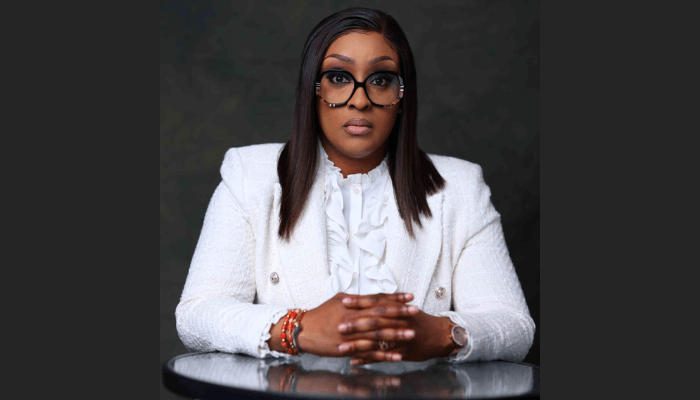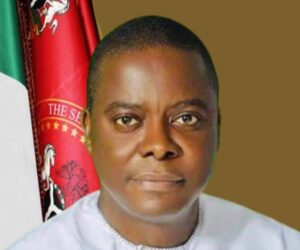Jennifer Adighije, managing director of the Niger Delta Power Holding Company, explains how reviving idle power plants, strengthening governance and boosting generation capacity reposition the power company in her first year in office. Dipo Oladehinde brings excepts:
Can you briefly highlight your achievements so far?
Upon assuming office, one of my priorities was to undertake a comprehensive audit and technical assessment of NDPHC’s generation assets. It became immediately clear that several of our power plants, critical national infrastructure, had been either in bad shape or grossly underutilised. The reasons ranged from poor operations and maintenance practices, procurement delays, persistent gas supply issues, to transmission constraints that were left unaddressed for far too long.
Notably, before August 2024, power plants such as Ihovbor, Alaoji and Omotosho NIPP were recording Plant Availability Factors (PAFs) below 5 percent. This level of underperformance translated to not only a significant waste of national resources but also missed opportunities in improving power supply and revenue generation.
In response, the new management under my leadership initiated a well-coordinated and strategic intervention targeting the recovery of idle turbine units. This included engaging OEM vendors, parts suppliers and building an in-house response team in partnership with service providers to provide quick response to facilitate recovery and avert downtime while also harnessing commercial relationships with gas suppliers to secure a stable gas supply to the power plants. These actions were deliberate and data-driven, aimed at bringing dormant capacity back on stream as quickly and sustainably as possible.
The results have been both encouraging and measurable. We have successfully recovered 5 generating turbine units across the fleet, restoring 625MW to active contribution to the national grid.
In terms of corporate governance and efficiency, what new systems or reforms have you introduced?
In terms of corporate governance and operational efficiency, one of my key priorities upon assumption of office was to strengthen internal systems and promote a culture of accountability, transparency, and performance. To this end, we introduced a number of reforms aimed at improving both structural governance and day-to-day operational discipline across the organisation.
Firstly, we institutionalised a performance monitoring framework that sets clear KPIs for directorates, which cascades down across departments. This has helped us track delivery timelines, measure output, and ensure greater accountability for results. In addition, we began quarterly performance reviews to assess progress and address gaps proactively.
We also undertook a review of our procurement and financial processes, streamlining approval workflows and ensuring stricter compliance with internal control procedures. This has helped to reduce delays, cut inefficiencies, and enhance the integrity of our procurement system.
On the governance side, we strengthened the role of internal audit and compliance by ensuring more independence in their reporting lines and giving them the support needed to function effectively. We also emphasised documentation, records management, and adherence to board-approved policies, especially around project execution and vendor engagement.
As part of my commitment to transparency and accountability, we have commenced procurement of an Enterprise Resource Planning tool for enabling organisation-wide planning for enhancing operational efficiency. We have also forged a strategic partnership with the EFCC to tackle procurement-related irregularities in NDPHC. This collaboration aims to identify and eliminate fraudulent practices, reinforce due process, and instil a strong culture of accountability.
How many additional Megawatts has NDPHC been able to contribute to the national grid in the past year since assuming the managing director?
I must say that our drive to recover dormant turbine units targets an increase in available power generation/grid capacity. As a result, NDPHC has been able to contribute an additional 625MW to the national grid. This incremental capacity has come largely from Calabar (125MW added), Ihonvbor (250MW added), Omotosho (125MW added), Sapele (125MW added); these milestones have generally improved sector-wide deliverables and performance metrics, which reflect in the performance report published by the regulator NERC on a quarterly basis.
Several of the NIPP power plants have struggled with gas supply and transmission bottlenecks. What practical steps have you taken to resolve these issues?
For transmission bottlenecks, we strengthened our technical collaboration with TCN and NISO. Currently, we are in the process of setting up a joint task framework to ensure that plant availability and dispatch are better coordinated, particularly during periods of grid stress. Additionally, we’ve initiated conversations around embedded and bilateral power solutions to ensure that, where evacuation through the national grid is constrained, we can explore alternatives that allow us to serve Eligible Customers directly.
These are not overnight fixes, but they represent practical, ongoing steps toward making our assets more productive and commercially viable.
Indeed, gas supply and transmission bottlenecks have long been major impediments to the optimal performance of several NIPP power plants. Upon assumption of office, I prioritised these challenges because they directly affect our ability to deliver reliable power to Nigerians and generate sustainable revenue.
On the gas supply front, we engaged directly with key gas suppliers and relevant government agencies to renegotiate and facilitate more reliable supply arrangements. This includes clearing some legacy payment issues, restructuring gas supply agreements to reflect current realities, and establishing stronger coordination mechanisms for monitoring supply consistency. A notable result of this is the improved gas availability to plants like Alaoji and Geregu, which are now gradually coming back to life.
What is the current status of the uncompleted NIPP plants and transmission projects?
One of the most significant milestones is the near completion of Egbema Power Plant, which was at 52 percent completion when I came on board and now stands at 80 percent. The contractors on the project, Messrs China Machinery Ltd CMEC, have also presented a progress plan which we are steadily working towards.
At Gbarain, we’ve hit a major milestone, too. This plant, which has been offline since 2020 after a fire incident, consumed the power control module. We have succeeded in awarding the contract for the PCM restoration to Tilt/Schneider Electric J.V, which is expected to be completed in 12 months. Other pre-commissioning exercises will also commence parri-passu to enable complete restoration of the plant to the grid by Q4-2026.
The plant had been severely limited by gas supply issues, but those are gradually being addressed, allowing the facility to resume meaningful contributions to the grid.
For the transmission projects, cash flow remains the major challenge that impedes progress. These projects are dollar-denominated, and to date, NDPHC has been unable to reach meaningful agreements on recoupment of investments valued at about 1,000,000,000,000 (One trillion naira). While challenges remain, we have sought the intervention of the regulator NERC to consider mediating to resolve the long-standing issue.
NDPHC has been active in rural electrification. How many communities or households have benefitted under your tenure?
We have always placed renewed emphasis on extending power to underserved and off-grid communities across the country. In the past one year alone, several rural communities, translating to thousands of households, have directly benefited from various distribution electrification projects executed by NDPHC. These include grid extensions, substations, feeders, spans of lines and standalone solar home systems.
Our interventions span across multiple geopolitical zones, and some of the notable distribution projects commissioned in 1 year include 1×7.5MVA 33KV/11KV Injection substation in College of Education, Maidugri and another 1×7.5MVA Injection substation in Maiduguri town, amongst several other projects set out to uplift communities and improve productivity.
Financing power projects remains a challenge. Has NDPHC secured any new funding, partnerships, or investment support in the past year?
Yes, financing has historically been one of the most persistent challenges in the Nigerian power sector, and NDPHC is no exception. Upon assumption of office, I understood clearly that to deliver on our mandate, we had to be proactive in diversifying our funding sources and creating bankable, investment-attractive projects. Over the past year, we’ve made considerable progress in this regard.
We have engaged both local and international development finance institutions to explore innovative financing models for our generation and distribution projects. One of the major steps we took was initiating project-specific investment frameworks especially for diversifying our power generation mix which aligns more closely to meet the expectations of Mr. president’s energy transition plan.
In this regard we also signed landmark Joint Development Agreements (JDAs) with NASENI collaboration set to unlock access to technical support, funding, knowledge capital, and co-investment opportunities that significantly reduce our financial burden in delivering renewable energy projects.
We are also exploring Public-Private Partnership (PPP) structures for some of our uncompleted assets, as well as bilateral power sales agreements that can enhance our liquidity position.
How is the company managing debts and liquidity issues that have long affected the power sector?
Managing debts and liquidity constraints has been one of the most excruciating challenges since I assumed office as MD/CEO of NDPHC. At the time, the company was heavily burdened by legacy debts, particularly from non-settlement of invoices and market shortfalls which significantly impacted our operational sustainability. It is, therefore, heartening that the Federal Government under President Bola Tinubu has shown strong political will and commitment by pledging to offset the over N4 trillion debt owed to Generation Companies, of which NDPHC is a significant creditor.
To address this, we’ve adopted a multi-pronged approach. First, we intensified our engagement with NERC, the Market Operator, and other relevant institutions to push for improved market discipline and enforcement of payment obligations. At the same time, we have prioritised bilateral power sales as a strategic alternative, targeting creditworthy Eligible Customers who can pay cost-reflective tariffs directly to us. This helps improve our liquidity and reduces reliance on the defective central settlement system.
Internally, we instituted tighter financial controls, enhanced revenue tracking, and pursued aggressive cost-optimisation measures across our assets. We’ve also engaged gas suppliers and other creditors to restructure some of our obligations in a way that aligns with our current cash flow realities.
While these measures are ongoing, we are already beginning to see signs of improved liquidity, increased investor confidence, and a gradual return to commercial stability. The ultimate goal is to build a financially resilient NDPHC that can sustain itself, grow strategically, and continue to deliver incremental value to the Nigerian power sector.
Where do you see NDPHC in the next five years under your leadership?
Over the next five years, I envision NDPHC evolving into a commercially sustainable, technologically advanced, and socially impactful power generation company. One that not only contributes significantly to Nigeria’s energy mix but also drives sector-wide performance through innovation.
We are working towards deepening our participation in bilateral power sales, expanding our renewable energy footprint, enhancing the reliability of our assets through digitisation and automation, and building a virile human capital base that is not only technically competent but also strategically aligned with the company’s evolving mission. I also see us becoming a key driver of industrialisation through our strategic partnerships and targeted projects in commercial clusters like Agbara, Mowe, Challawa and others, which will reduce reliance on imports and create jobs.









